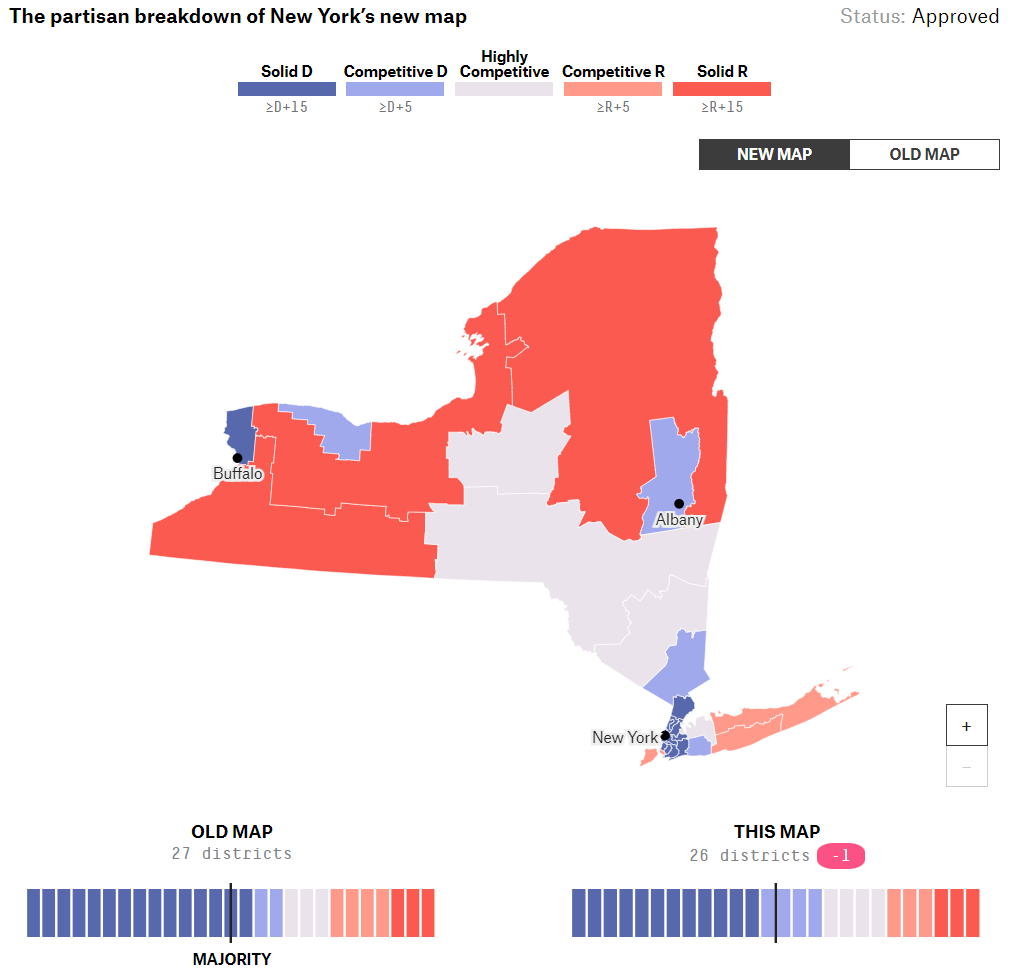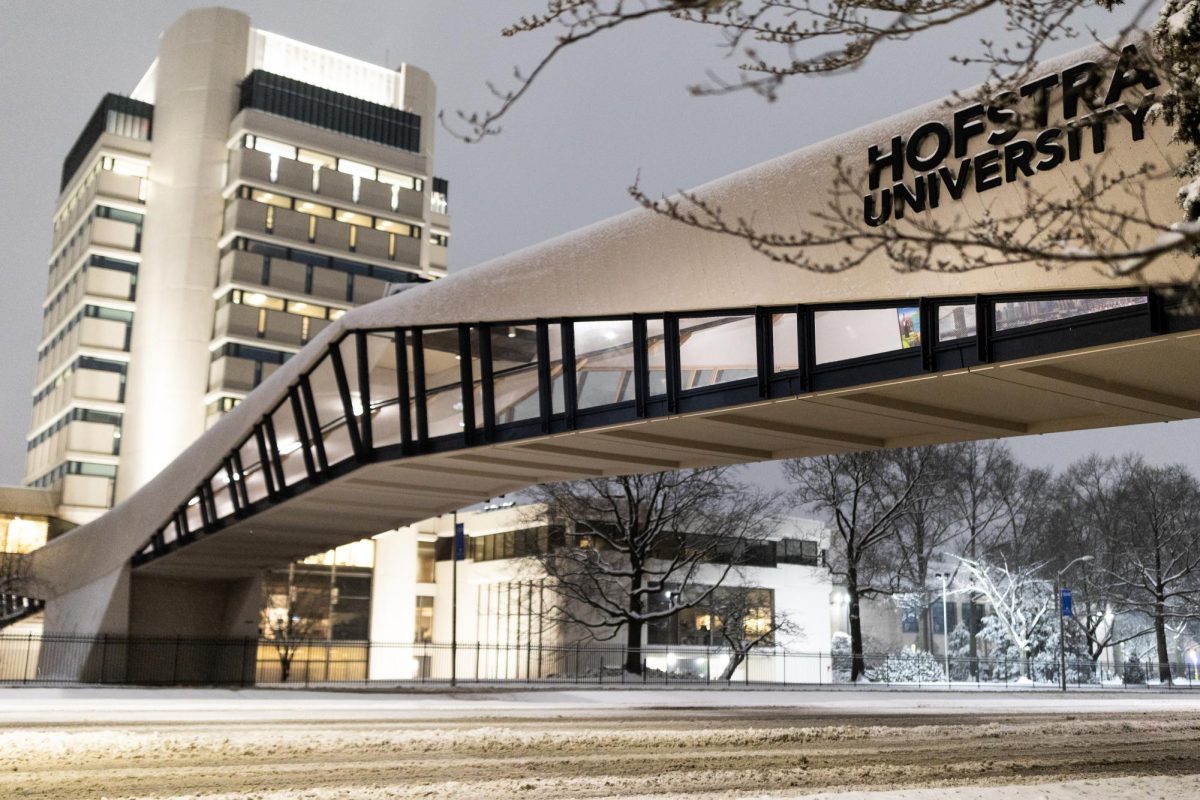Map created by Jonathan Cervas.
As Tuesday, Nov. 8, draws nearer, New Yorkers will be using the midterm election to voice their concerns about the new district map.
In wake of the 2020 census, New York has apportioned 26 congressional districts which was one fewer than the number appointed after the 2010 census. As a result, when the members of New York’s redistricting commission met in January, chaos ensued.
“Redistricting is the redrawing of district lines for House [of Representatives] elections. It takes place because every 10 years, the House is reapportioned and there is a change in the number of seats per state in the House,” said Rosanna Perotti, professor of political science.
New York lost a seat in the House since its population is not growing at the same rate in comparison to other states, according to Perotti. For instance, while the United States Census Bureau indicates that New York’s population consists of about 8.5 million people, states such as Texas with a population of about 30 million gained a seat.
“Even when the number remains the same the state government has to change the lines to reflect changes in the distribution of population within the state,” Perotti said.
New York commission’s failure to create new lines for the House of Representatives, the Assembly and the state Senate left the redistricting process in the hands of a Democratic controlled legislature.
“Because the state government draws the lines, in many states it’s the state legislature that’s drawing the line, that means the people that serve in the state assembly and the state senate,” Perotti said. “Whichever party controls that state government, that party is going to be able to draw districts that are favorable to it.”
As a result, the legislature proposed a congressional map that gave Republicans only four of the 26 congressional seats. This map was immediately struck down and the Appellate Division of the New York Supreme Court ruled that the maps were subjected to partisan gerrymandering.
Gerrymandering, according to Britannica, is the “practice of drawing the boundaries of electoral districts in a way that gives one political party an unfair advantage over its rivals.”
Students explained how gerrymandering can occur in a state.
“In the redistricting process, gerrymandering occurs despite efforts against it,” said Briauna Rushin, a junior political science major. “This hurts minoritized communities by restricting their political representation.”
Perotti explained that minority communities are the most effected by this.
“The real harm that happens when gerrymandering occurs is that entire communities of people are split up,” Perotti said.
In May, a new congressional map drawn by redistricting special master Jonathan Cervas was adopted by Justice Patrick McAllister. The new map is made up of seven Republican-represented districts and 24 Democratic districts and will be used during the 2022 elections.
However, the new map still comprises unfair redistricting, as representatives whose districts were merged with one another were forced to run against each other. Democratic representatives Jerrold Nadler and Carolyn Maloney had to run against each other in the primary elections that took place from June 28 to Aug. 23. Ultimately, Nadler won the race to represent District 12.
“Immediately somebody is just going to not have to run for reelection, and what happens is that two members are often redistricted into the same district,” Perotti said.
Furthermore, New Yorkers have been concerned about the impact of redistricting on diverse communities. According to the Daily News, one prominent example is the minority communities in “Coney Island and the Marlboro Houses, one of the largest [New York City Housing Authority] developments in Brooklyn.” These communities have been moved into the district containing Bay Ridge, a predominantly white and wealthy neighborhood.
“More often than not communities of color are most impacted by redistricting,” said Bryan Perez, a senior political science major. “For example, a Republican-controlled legislature can split a district that is composed mostly of minorities (who tend to vote Democratically) and causes a Democratic candidate the likelihood of not being elected there.”
Overall, students say this conversation will continue.
“There are many disparities within communities that should have a larger voice,” said Wilmer Majia, a junior political science major.
Although there has been a shift in control of certain districts, New Yorkers are urged to participate in the upcoming election as it will set the tone as to what issues are addressed by the winning candidates.







